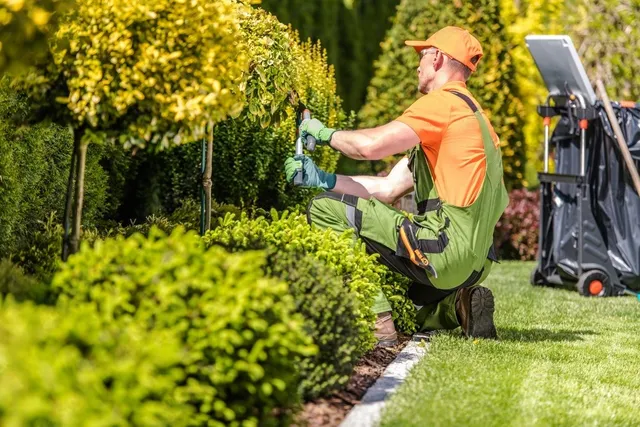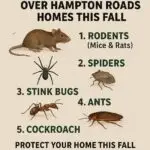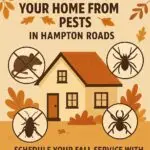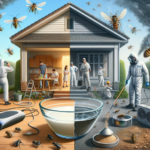
Your yard and landscaping play a critical role in determining how susceptible your home is to pest infestations. While lush greenery and vibrant plants can enhance the beauty of your property, certain landscaping choices can inadvertently attract pests. Understanding the link between landscaping and pest control can help you create an outdoor environment that is both aesthetically pleasing and pest-resistant.
In this article, we’ll explore how landscaping impacts pest control and provide practical tips to minimize pest problems through smarter landscaping practices.
How Landscaping Attracts Pests
1. Overgrown Vegetation
- Problem: Overgrown grass, shrubs, and bushes provide shelter for pests like rodents, mosquitoes, and ants.
- Impact: These areas serve as breeding grounds, making it easier for pests to move closer to your home.
2. Standing Water
- Problem: Water features, clogged gutters, or poorly drained areas create ideal breeding sites for mosquitoes and other water-loving pests.
- Impact: Standing water increases the likelihood of mosquito infestations and other waterborne pests.
3. Dense Mulch Layers
- Problem: Mulch retains moisture and warmth, attracting pests like termites, ants, and beetles.
- Impact: Placing mulch too close to your home’s foundation can lead pests directly to entry points.
4. Fruit Trees and Garden Plants
- Problem: Fallen fruit and vegetable scraps attract pests like flies, ants, and rodents.
- Impact: An unkempt garden becomes a food source for pests, encouraging infestations.
5. Lighting Choices
- Problem: Bright outdoor lights attract flying insects like moths and beetles.
- Impact: These pests can easily find their way indoors.
Landscaping Tips to Minimize Pest Problems
1. Maintain a Well-Kept Yard
- Regularly mow the lawn to reduce hiding spots for pests.
- Trim trees, shrubs, and hedges to prevent overgrowth.
- Remove dead leaves, grass clippings, and other yard debris promptly.
2. Proper Drainage
- Ensure water features like fountains or birdbaths are cleaned regularly.
- Fix drainage issues to prevent water pooling around your yard.
- Keep gutters and downspouts clear to avoid standing water near your home.
3. Smart Mulch Placement
- Use inorganic mulch, like rocks or gravel, near your home’s foundation instead of organic mulch.
- Apply mulch sparingly and keep it at least 12 inches away from your home’s walls.
4. Pest-Resistant Plants
- Incorporate pest-repellent plants like lavender, marigold, citronella, and basil into your landscaping.
- Avoid planting flowers and shrubs that attract pests, such as those producing excessive nectar or fruit.
5. Manage Fruit Trees and Gardens
- Regularly harvest fruits and vegetables to prevent spoilage.
- Remove fallen produce from the ground.
- Use netting to protect your garden from pests like birds and rodents.
6. Outdoor Lighting Adjustments
- Switch to yellow or sodium vapor lights, which are less attractive to insects.
- Position lights away from entryways to prevent bugs from gathering near doors and windows.
Additional Landscaping Considerations
- Create Barriers: Use gravel or stones to create a barrier around your home’s foundation.
- Install Fencing: Use fencing to protect gardens from larger pests like rabbits and deer.
- Prune Tree Branches: Keep branches trimmed at least 3 feet away from your home to prevent easy access for pests like ants and squirrels.
How Adibug Can Help
At Adibug Pest Control, we understand that your landscaping choices directly impact pest activity around your home. Our team provides:
- Comprehensive Yard Inspections: Identify landscaping features contributing to pest problems.
- Customized Pest Control Solutions: Tailored treatments to address specific issues caused by your landscaping.
- Preventive Strategies: Expert advice on maintaining a pest-resistant yard.
Don’t let your yard become a haven for pests! Contact us today at 7578520085 or visit Adibug.com to learn more about our pest control services. Together, we’ll ensure your landscaping enhances your home without inviting unwanted guests!







